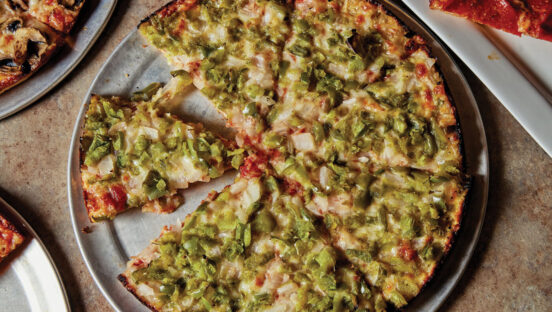PMQ has received many emails and calls about the wood dough boxes seen in most of the articles about New York pizzerias. As a result, Tom Boyles asked me to share my knowledge on this subject.
Wood boxes were around long before plastic and metal…they were the first type of dough boxes available and have been around for 70 to 80 years. They are most often used in the New York area by Italian pizzerias. The finest pizzerias in the NY area are still using them, including myself. So what’s with the wood? Let’s take a look at them, along with other types of dough boxes.
Wood Dough Boxes
To start, let’s look at how they are made. There are a few companies out there who still make wood dough boxes, but you can have a local carpenter make them. Typically, they are made from pine, which I believe is your best choice because pine is stronger. You can also have them made from birch or apple wood, but these are more expensive than pine.
How does wood affect the dough? The wood removes the moistness from the bottom of the dough and the pizza becomes much crispier. They are also used by bread bakers as holding boxes. They do not retard the dough quick enough so I recommend using the dough the same day for the best results. For high volume shops, they are OK.
Cleaning is required regularly because they are wood. To clean them, all that is needed is to brush them down with some warm water or wipe them out with a cloth, but do not use detergent. You don’t want to remove all of the oil that will begin to collect after time. The older they get, the better they mature, but if you don’t clean them about once a month, mold will develop. They will last a long time, but they do take up a lot of space. Chef’s recommendation: “You Bet.”
Plastic Dough Boxes
Plastic dough boxes are relatively new in this industry. The newest boxes made today are getting thinner and lighter. The older ones were heavier and are not doing the job due to the thickness of the plastic. It does not chill and slow down the fermentation because plastic does not get cold like metal. Plastic is a poor conductor of temperature.
Dough can rise too quickly in plastic. As it does, it loses control as the dough chills fast, so adjustments need to be made to your dough. Water temperature needs to be colder or you can cut down on the yeast or sugar. You can also increase the salt because it will slow fermentation down. Once adjustments are made, you’ll be OK. The good thing about plastic is that it’s easy to maintain and keep clean and the price may be right as well. They do take up a lot of space, but are good for high volume pizzerias. The newer plastic is also very durable and chills quicker than the older plastics that were used.
Stainless Steel Dough Boxes
Stainless steel dough boxes have been around a long time and can still be found in the New York area, but can be difficult to locate as only a few people still make them. They retard the dough longer than the plastic boxes because they conduct temperatures better. The stainless steel boxes are light and easy to handle and stainless steel gets colder faster and slows down fermentation. They are also easy to maintain and durable. They take up a lot of space. Chef’s recommendation: “Yes.”
Aluminum Dough Pans
Aluminum dough pans are good for dough retardation and take up less space, but they are very messy and greasy. They are difficult to keep clean, and equally difficult to keep yourself clean, and very expensive. They also require weekly maintenance. Chef’s recommendation: “No.”
If you have any further questions about wood dough boxes or metal boxes, give Carl a call at (631) 956-3365, or if you are outside the U.S. use + dialing.














